Grapefruit Jam
Grapefruit Jam is an easy, tangy homemade preserve that’s perfect for your morning toast.
Great for beginners, the only ingredients you need are three or four grapefruits plus jam sugar.
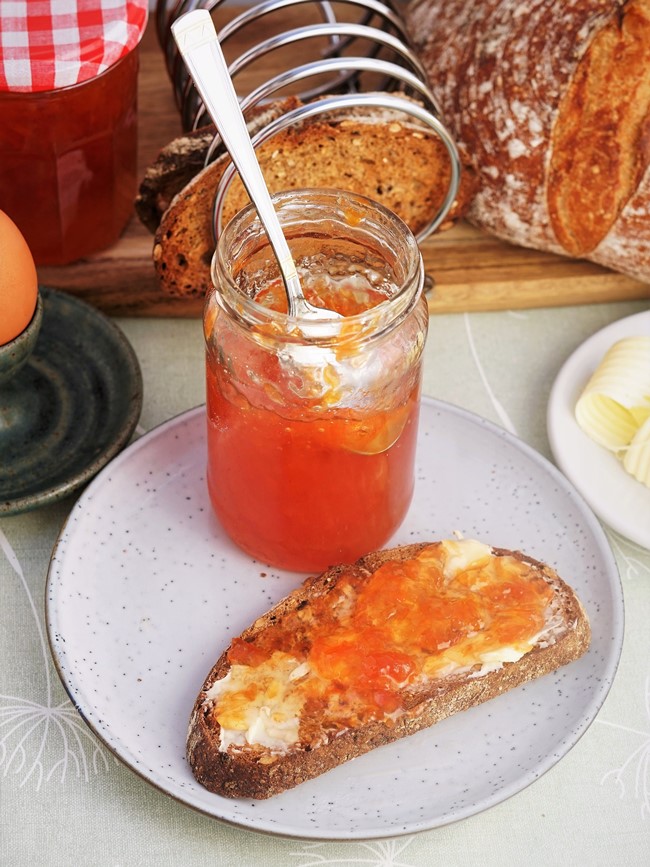
After discarding the peel and pith from the grapefruits, the flesh and juice are quickly boiled with the sugar. In little more than ten minutes you’ll be ready to pot up your Grapefruit Jam.
As it doesn’t contain peel, this lively preserve isn’t strictly speaking a marmalade. But it does have the refreshing, bittersweet flavour reminiscent of grapefruit marmalade.
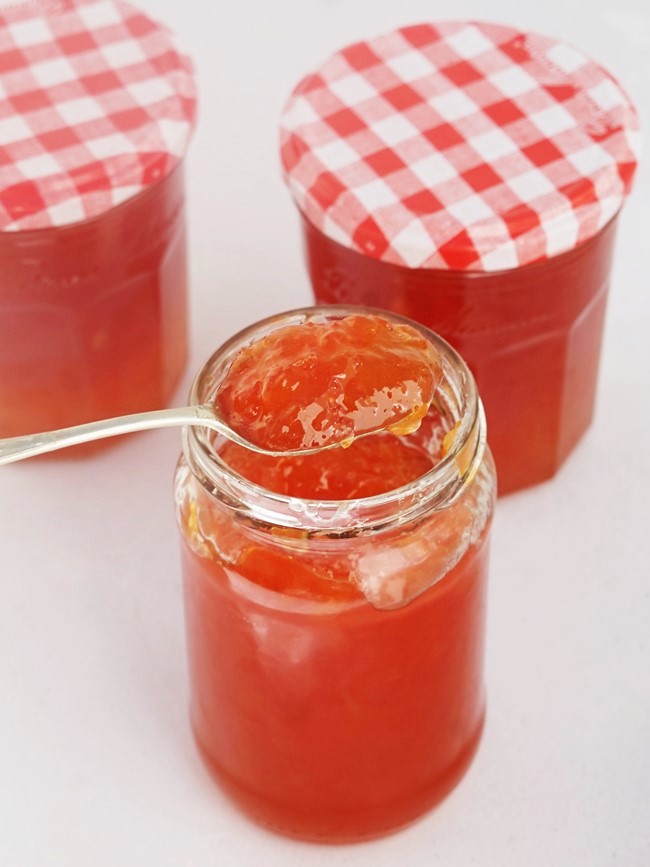
Not just for toast, try this simple jam spooned on pancakes, scones, with yogurt or porridge, or crusty bread and butter.
Jump to Recipe
THE PLEASURE OF PRESERVING
The making of jams, chutneys and other preserves is often associated with late summer and autumn. With a bounty of local, seasonal produce, it makes sense to conserve some for future use.
But you don’t have to only make preserves when there’s a glut of fruit and vegetables.
With a household of just two, I enjoy preserving in small batches all year round.
Perhaps a jar of Quick Pickled Cucumbers to accompany a kebab or burger. Or maybe a single pot of Gooseberry Compote to serve with creamy overnight oats and yogurt.
In Britain, there’s also the winter tradition of making preserves with imported citrus fruits when they’re at their best. Most famously, Seville oranges go into marmalade.
The preserve I’m sharing today is in that same tradition. Made with grapefruit instead of oranges, it’s much easier and quicker than marmalade.

You can use any colour grapefruit for Grapefruit Jam.
I happened to have pink ones which make a deep reddish-orange preserve. Regular yellow ones should give a golden, honey coloured jam.
JAM OR MARMALADE?
My Grapefruit Jam undoubtedly has the bittersweet flavour we associate with marmalade.
Although the original marmalade or marmelo was made from quinces (marmelo is Portuguese for quince), these days marmalade is a preserve of citrus fruit. So, mine ticks that box too.
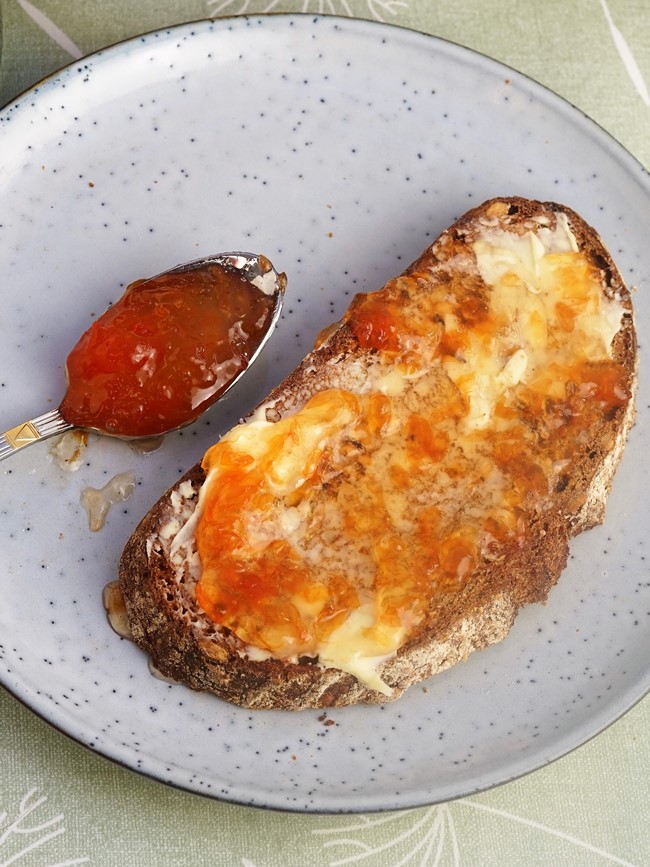
However, I don’t consider it a true marmalade as it doesn’t contain the peel of the grapefruit.
This is good news for people who don’t like peel, although I don’t mind it.
But importantly, it means the process is much quicker than that for true marmalade.
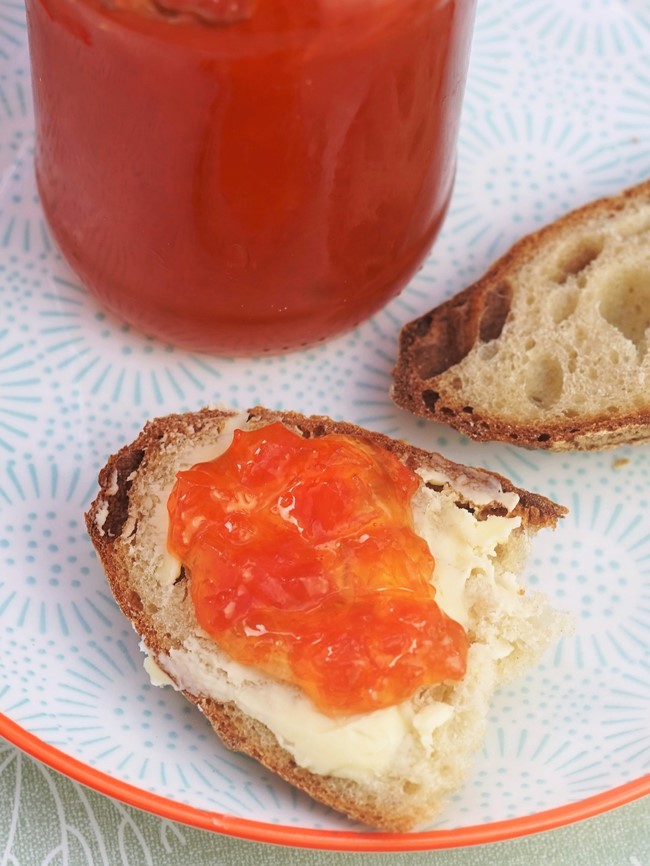
Citrus peel is hard. So, if you’re going to include some in a preserve, it must be softened first.
I’ve seen marmalade recipes which involve soaking for 24 hours, then simmering for 2 hours. And that’s BEFORE you even think about boiling to setting point.
Well, you can forget that with my Grapefruit Jam.
For the batch you see in this post it took me less than an hour from prepping the fruit to potting into jars.
EASY GRAPEFRUIT JAM
If you’re new to jam making, you might like to read my Beginner’s Guide to Jam Making. However, full instructions for Grapefruit Jam are included here and in the recipe card at the end so it’s entirely optional.
PREPARE YOUR JAM JARS
Because this preserve is made so quickly, I suggest you prepare your jars first.
You can buy fancy jars for homemade preserves, and I do have a few nice ones. But most of the time I just recycle old jam jars with screw-topped, plastic-lined lids.
Give the jars and lids a good wash in very hot, soapy water, rinse in clean water, then leave upside down to drain.
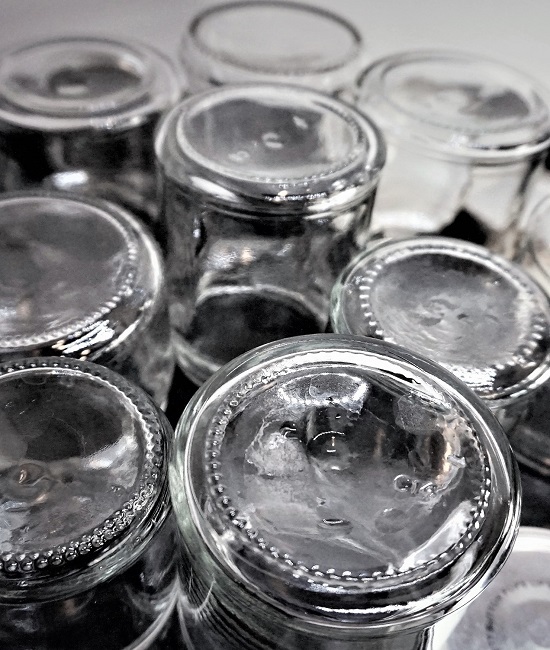
The jars and lids are put into a low oven which will thoroughly dry them and should sterilize any lurking bugs. Meanwhile, you can get started on the jam.
Once the jars and lids are very hot, you can turn the oven off. But leave them in there while you finish the jam as they need to be hot when it’s time to pot up.
PREPARE THE GRAPEFRUIT
This is the most time-consuming bit of the process, but it’s worth doing properly.
Besides removing the grapefruit peel, you should also discard the pith as it’s very bitter. Also take out any seeds.
I cut the fruit into quarters than prise out the fruit from between the membranes with a small knife.
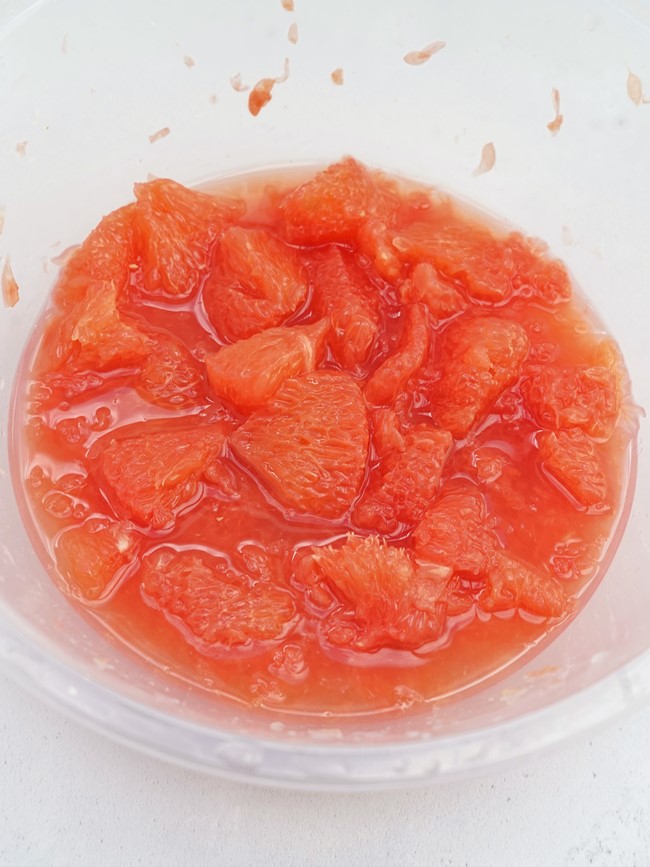
Do this over a bowl to catch all the juices.
When you’ve done this, use scales to weigh the pulp and juice. If, like me, you’re at all forgetful, then make a note of the weight as you’ll need it later.
At the start, my grapefruits weighed 1.6 kilos in total. From this I got 616 grams of pulp and juice. I ended up with 3 jars of Grapefruit Jam.
MAKING JAM
The method for making all types of jam is basically the same.
Fruits (also sometimes vegetables: see my Marrow or Courgette Jam with Lemon & Ginger) are cooked with sugar until setting point is reached. I’ll tell you how you’ll know when that’s happened in a bit.
Fruit (and some veg) contain a natural setting agent called pectin which is released during the cooking.
Different fruits contain varying amounts of pectin. Higher pectin means a jam will set easily, lower and it will be more difficult.

While grapefruits are a high pectin fruit, most of their pectin is found in the peel. And of course, we’re not using it in our jam.
So, Grapefruit Jam is a preserve where you should use jam sugar rather than regular sugar. Jam sugar has pectin already added and is useful for low pectin fruits such as strawberries.
Don’t buy sugar labelled ‘preserving sugar’. This doesn’t contain pectin but is simply large crystal sugar which dissolves slowly.
I recommend the same weight of sugar and fruit for this jam. That’s why I said to note down the weight of the graperfuit after preparation. This gives a sweet/bittersweet preserve. You can use less sugar if you prefer, but bear in mind that this could reduce the keeping qualities of the jam.
COOKING THE FRUIT & SUGAR
Transfer the pulp and juice to a deep, wide, heavy saucepan and tip in the jam sugar.
Put the pan over medium heat and stir until the sugar dissolves.
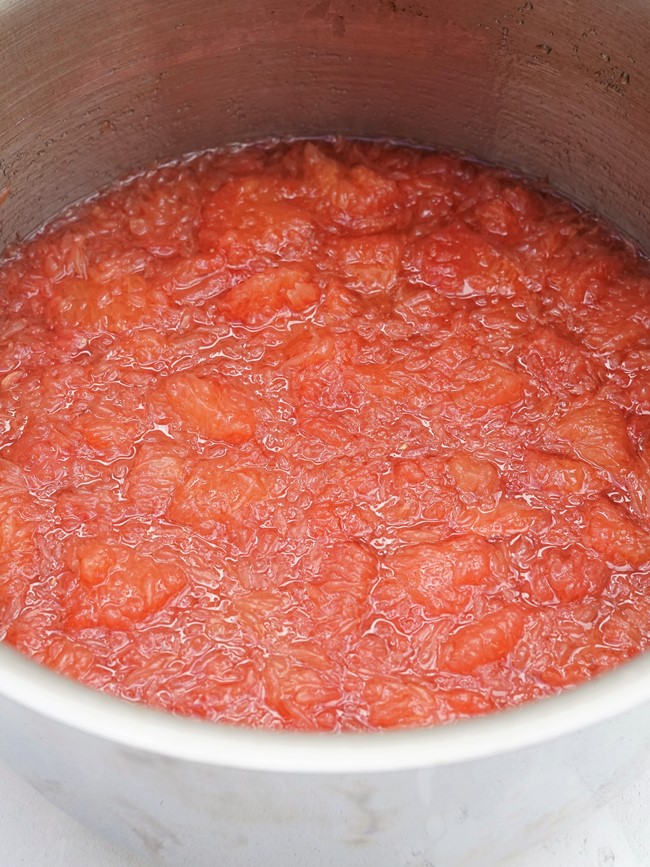
Once the sugar is completely dissolved, turn up the heat and bring to a boil. You can put a lid on for this stage to speed it up if you like.
As soon as the jam boils, take the lid off and keep boiling hard (this is often called a ‘rolling boil’) until setting point is reached. Resist the urge to stir as this will lower the temperature.
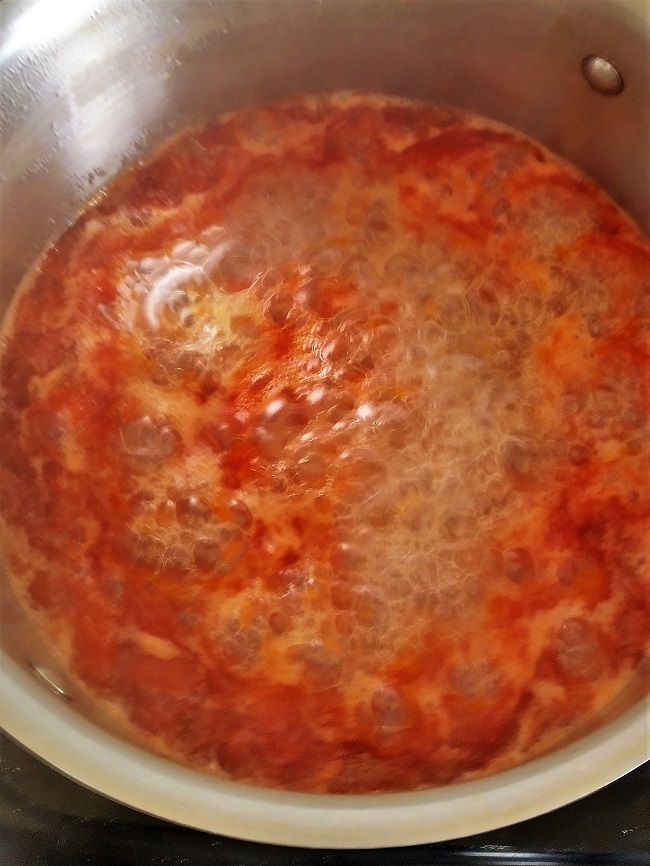
You won’t be able to tell when you’re at setting point just from looking at the jam. In fact, although it may look very runny in the pan, the jam may still be ready.
So, how do you know when setting point is reached?
SETTING POINT
In theory, setting point is reached at 104.5° Celsius. So, in theory, you could invest in a jam thermometer to indicate when you’ve hit that sweet spot. However, the reality isn’t so simple.
For example, a pectin rich jam will set at a lower temperature. From personal experience I can tell you that I’ve had jams clearly at setting point before the thermometer was anywhere near 104.5. I also wouldn’t be surprised if many thermometers for the home cook aren’t pinpoint accurate anyway.
I prefer to use a combination of the old fashioned ‘flake’ and ‘cold saucer’ tests. Sometimes, more out of interest than necessity, I’ll do a dip of the thermometer too.
I haven’t found a better description of the ‘flake’ and ‘cold saucer’ tests than this illustration from the book that ‘set’ me on my preserving journey many years ago.

Once you’ve made jams and tested for a set a couple of times, this will become easy.
The only thing I’d add is to put some saucers in the freezer before you start making the jam. This will speed up the cooling when you do the ‘cold saucer’ test.
This batch of Grapefruit Jam took just 10 minutes to reach setting point. One of the quickest jams I’ve made. Besides the pectin rich jam sugar, the fact that citrus fruits are highly acidic may have helped: acid encourages fruit to release pectin.
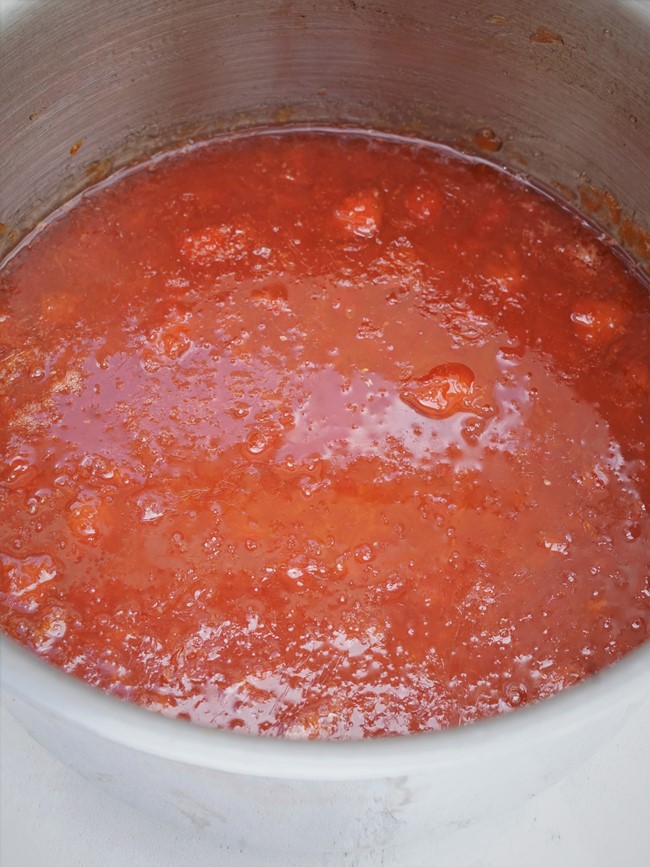
Interestingly, my thermometer read 110° Celsius. As the jam definitely wasn’t over-set, this illustrates nicely why I don’t recommend relying on a thermometer.
POTTING UP & STORING GRAPEFRUIT JAM
Once setting point is reached, take your hot jars from the oven, and pour the jam into them.
Because I make preserves regularly, I have a jam funnel which makes the job much less messy. Alternatively, carefully pour the jam into a large, clean heatproof jug and fill the jars from that.
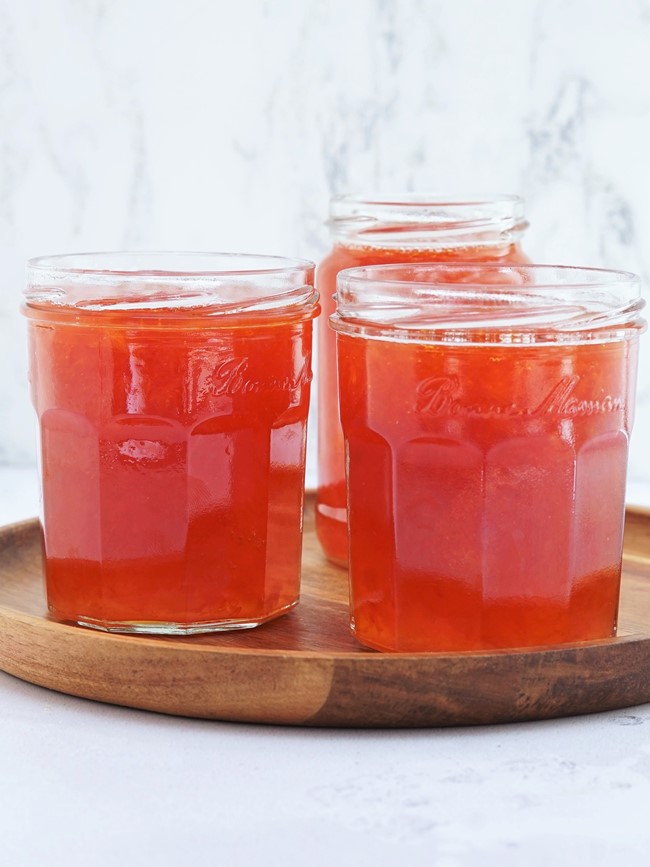
When you’ve filled the jars, screw the lids on while protecting your hands with a cloth.
You don’t need to screw the lids completely tight at this stage. It’s much easier when they’ve cooled a bit.

You should also find that once the jars are completely cold then the lids, if you press the top, will no longer spring back and make a popping sound. Be pleased: that means you’ve got an airtight seal. If that doesn’t happen, I tell you what to do in the notes to the full recipe at the end.
You can now label your jars and put in a cool, dark place. A kitchen cupboard away from the oven or radiators should be fine.
Jam doesn’t need time to mature, so you can enjoy it straight away. But full jars of properly stored jam will keep at least a year.
If your last jar wasn’t completely full, it won’t be airtight. Keep it in the fridge and use it up within a few weeks, as you would any opened jar of jam or other preserve.
WAYS TO EAT GRAPEFRUIT JAM
In terms of taste, I think my Grapefruit Jam is indistinguishable from a shred-less grapefruit marmalade.
So, as you’d expect, you can use it in every way you would a traditional marmalade.
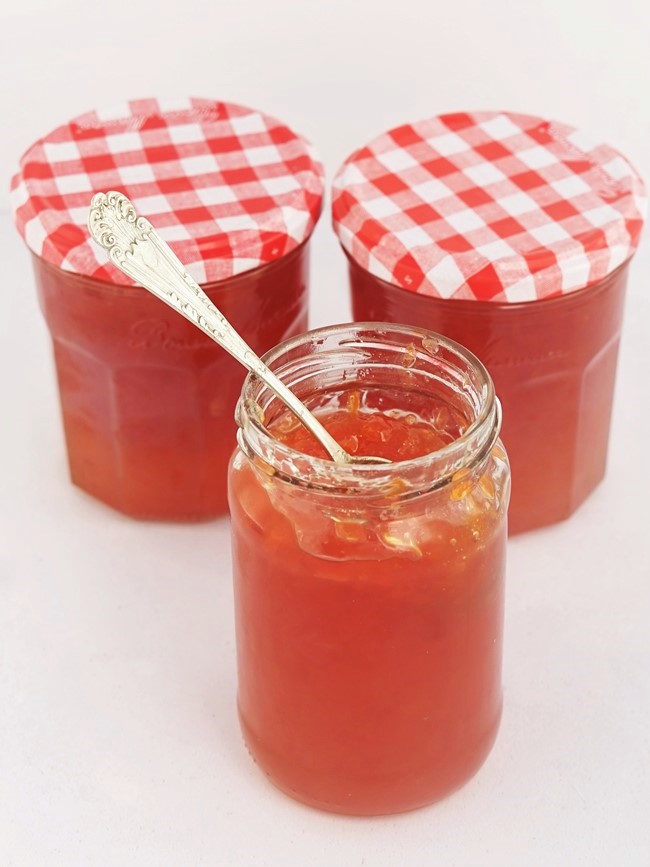
First and foremost, that means slathering it on toast for breakfast.
I love it on my homemade no-knead crusty bread made with a mix of wholemeal, rye and malthouse flour with a few seeds thrown in. After toasting thick slices, I butter generously then spread on plenty of the bittersweet preserve.
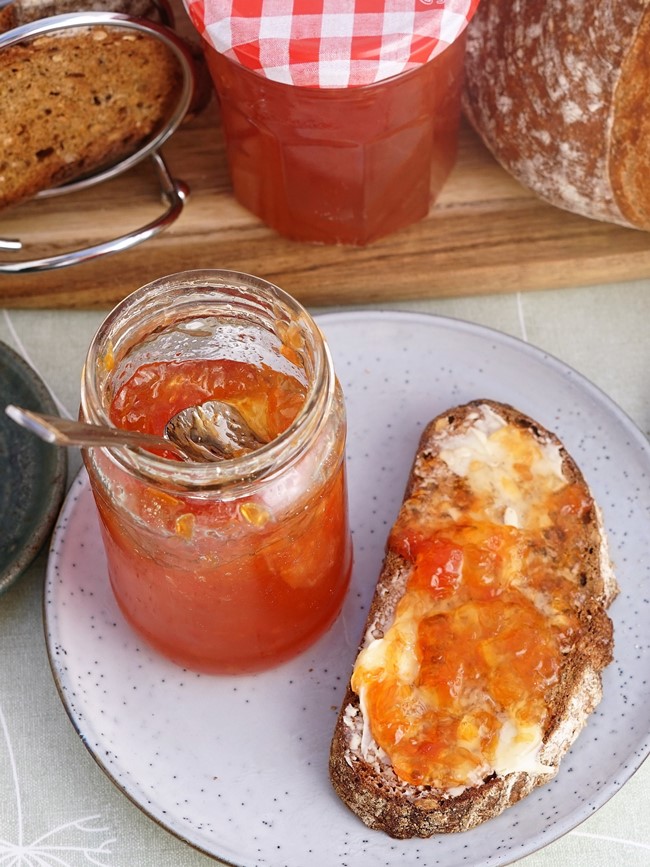
If you’re a fan of breakfast pancakes, then Grapefruit Jam is a tangy contrast to the sweet, fluffiness. I like melted butter on them too.
Lovers of porridge or yogurt can also add a spoonful or two to their breakfast bowls.
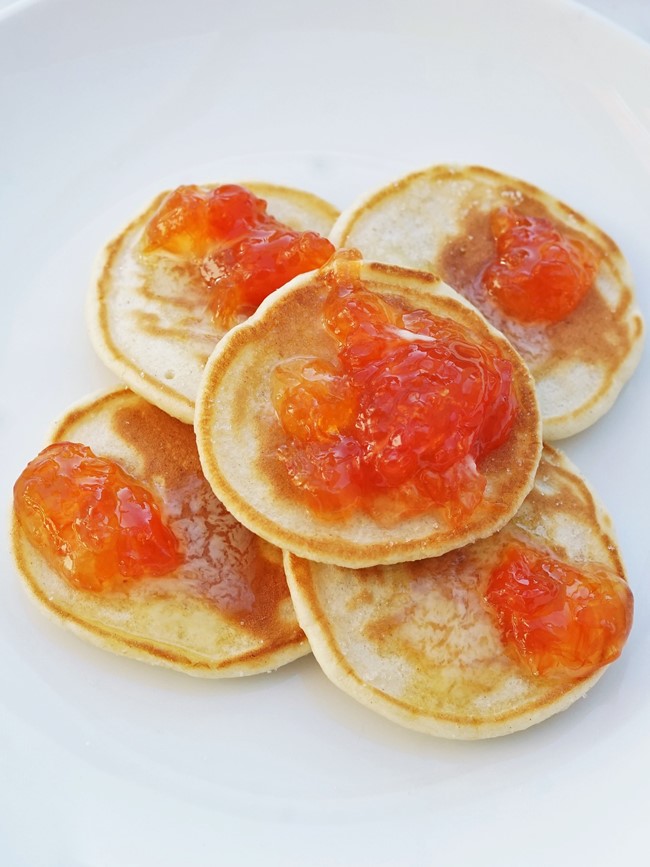
Grapefruit Jam also makes a tart change to purely sweet jams like strawberry on a simple bread and butter snack or even Classic Sultana Scones for afternoon tea.
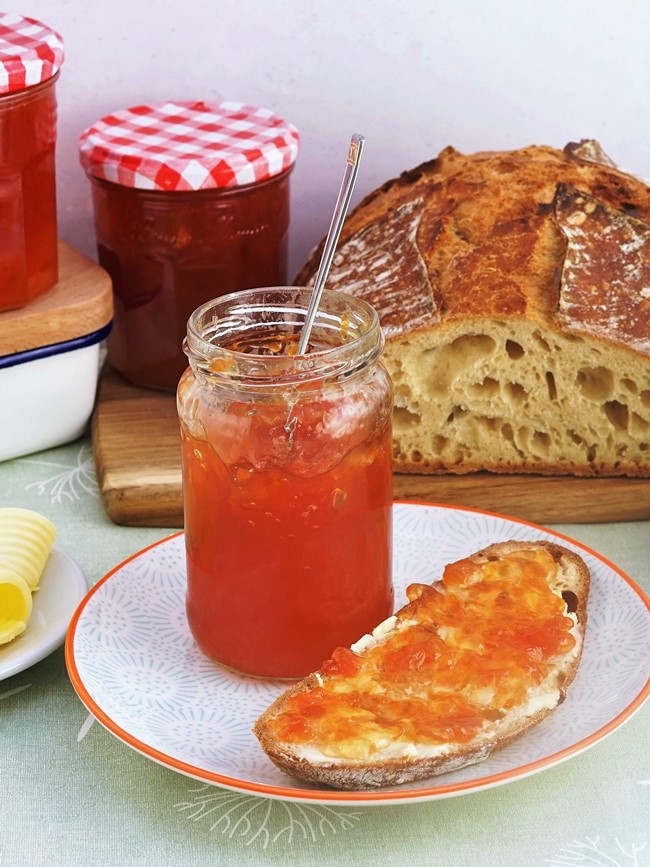
Traditionally, marmalade has also been used as a cooking ingredient.
Try adding a spoonful to a fruit cake batter or homemade mincemeat. And don’t forget savoury recipes too. Brush on the lightly warmed jam instead of honey in my recipe for Glazed Gammon. Or use it to coat sausages or ribs.
EASY GRAPEFRUIT JAM
With just two ingredients, Grapefruit Jam must be the easiest preserve I’ve ever made.
Whether you’ve never made jam before, or like the tang of marmalade but want a quicker result, I think you’ll love it.
And making two or three jars of a preserve rather than a cupboard full is so doable with this straightforward recipe that’s perfect for beginners.
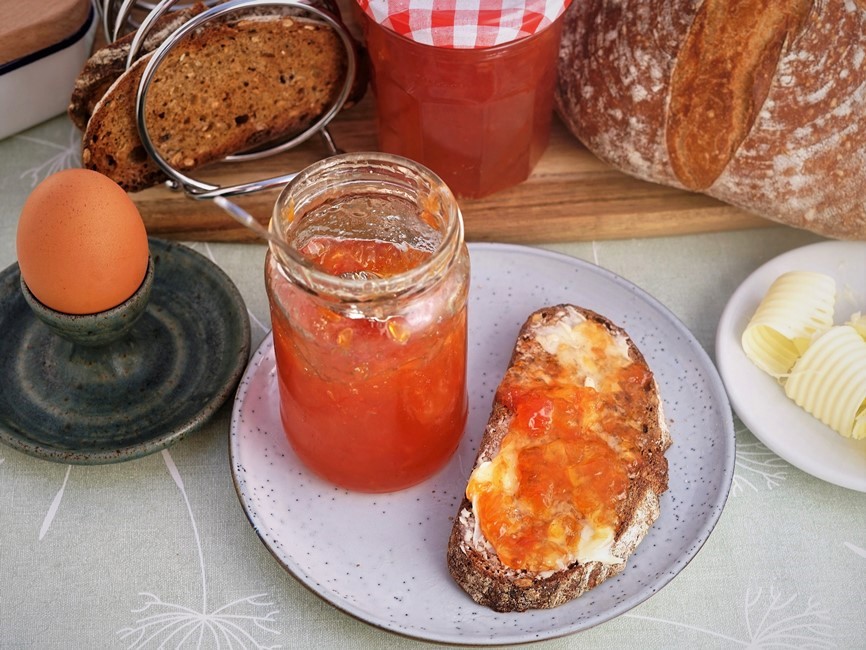
HAVE YOU MADE THIS JAM?
LEAVE A COMMENT & DON’T FORGET TO LEAVE A RATING
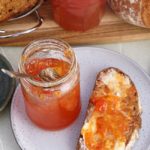
Grapefruit Jam
An easy homemade preserve with a refreshing, bittersweet taste that's perfect for your morning toast, pancakes, porridge or yogurt.
Although the flavour is like marmalade, I prefer to call it jam as it is made with grapefruit pulp and juice only, with no peel.
Ingredients
- 3-4 large grapefruit any colour
- 600-800 g (approx) jam sugar see Recipe Notes #1 and #2
Instructions
-
Put 2 or 3 small saucers in the freezer; they'll be used later to quickly cool teaspoons of jam to find when the setting point has been reached.
-
Wash 3 jars with screw-on, plastic lined lids in hot soapy water then rinse. Turn them upside down to drain.
Put the jars and lids on a baking tray and place in the oven at its lowest setting.
Turn off the oven when the jars are very hot, but leave them inside until you're ready to pot the jam. The jars must still be hot when potting up.
-
Remove and discard the peel, pith and seeds from the grapefruit. You can do this by cutting into quarters then using a knife to cut out the flesh from between the membranes. Do this step over a bowl to catch all the juices.
Weigh the fruit and juice then weigh out the same amount of jam sugar.
-
Put the fruit, juice and sugar in a large, wide pan and place over medium heat.
Stir until the sugar dissolves then turn up the heat and bring to a boil (you can put on a lid to speed this up).
As soon as it comes to a boil, take off the lid and boil hard until setting point is reached (10-15 min).
Testing for setting point
Take the saucepan off the heat.
Flake test: Take some jam on a spoon, cool it a little, then let it fall off the edge of the spoon. If the final bits of jam come together into 'flakes' rather than running off in a stream, then proceed to the Cold Saucer test. If it doesn't flake, boil for another 1-2 min then test again.
Cold Saucer test: Take one of the cold saucers from the freezer, put a teaspoon of jam on it to cool then gently push the jam with your finger. If it wrinkles, then setting point has been reached. If not, boil for another 1-2 min then test again.
(Optional) Using a jam thermometer: Jam is said to set at 104.5° Celsius. However, various factors (e.g. the amount of pectin present) can affect this so I don't recommend using a thermometer only.
-
Once setting point has been reached, take the hot jars and lids from the oven and pour the jam into them (use a jam funnel or transfer to a clean heatproof jug and pour from there).
Protecting your hands, put the lids on and leave to cool. When just warm, you may be able to tighten the lids a little more.
-
When the jars are completely cold, check for an airtight seal by pressing down in the centre of the lid.
If you can't press it down, or the centre does not pop back up again, then you have an airtight seal. If the centre pops back up: see Recipe Note #3 for what to do.
Ready to use immediately but unopened jars should keep at least a year in a cool, dark place.
Once open, store in the fridge and use within a few weeks.
Recipe Notes
Note #1 Jam Sugar. Because most of grapefruit's pectin (the natural setting agent found in fruit) is in the peel which we aren't using, you need to make this jam with jam sugar as it has added pectin. Do no t use 'preserving sugar' as this does not have added pectin (it's simply large crystal sugar).
Note #2 Amount of sugar. The amount of sugar required will vary as it should be equal to the weight of grapefruit after peel, pips, pith etc. are removed. Note that if you decide to use a lower ratio then this will reduce the keeping qualities of the jam.
Note #3 Air tight seal. If you do not have an airtight seal when the jam is completely cold (i.e. the centre of the lids pop back up when pressed down), you can either:
i) Store in the fridge and use within 2 weeks.
OR
ii) Remove the jam from the jars and re-boil. Re-wash and sterilize the jars and lids in the oven as before. Pot up while the preserve and jars are hot and test again for an airtight seal. If you still don't have one, store in the fridge as i) above.
ENJOYED THIS RECIPE? YOU MAY LIKE THESE

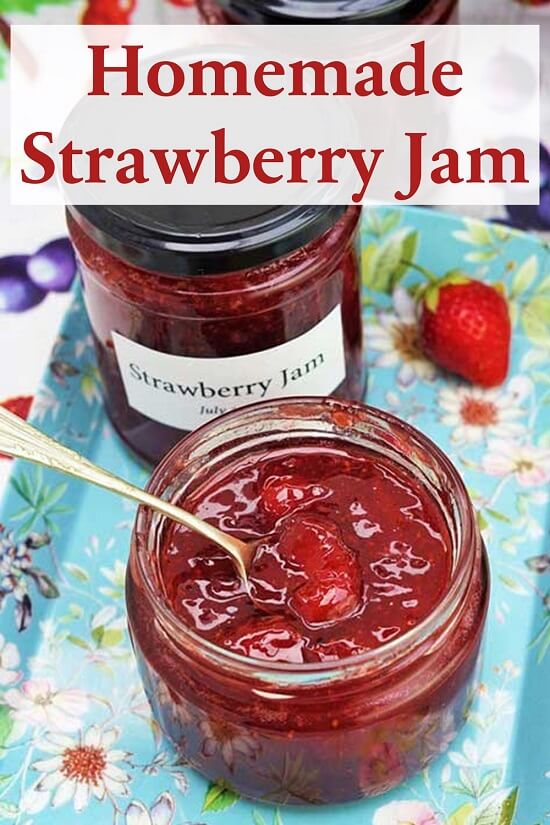
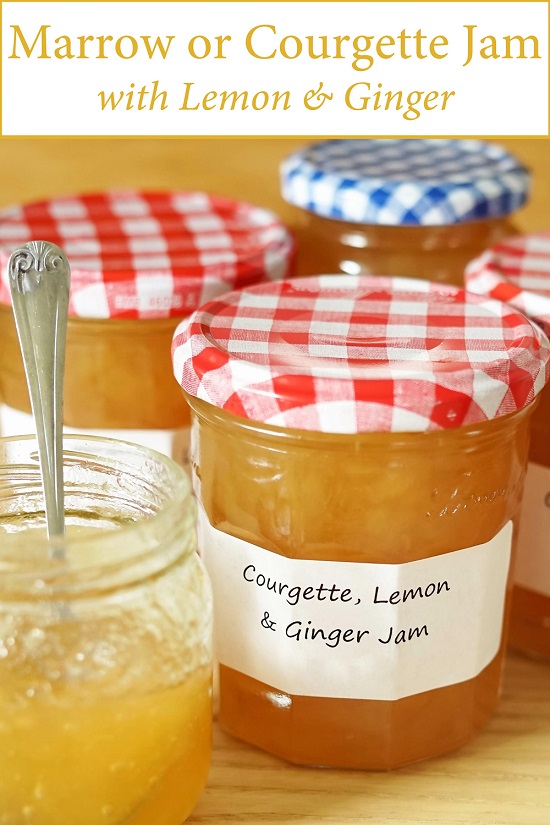
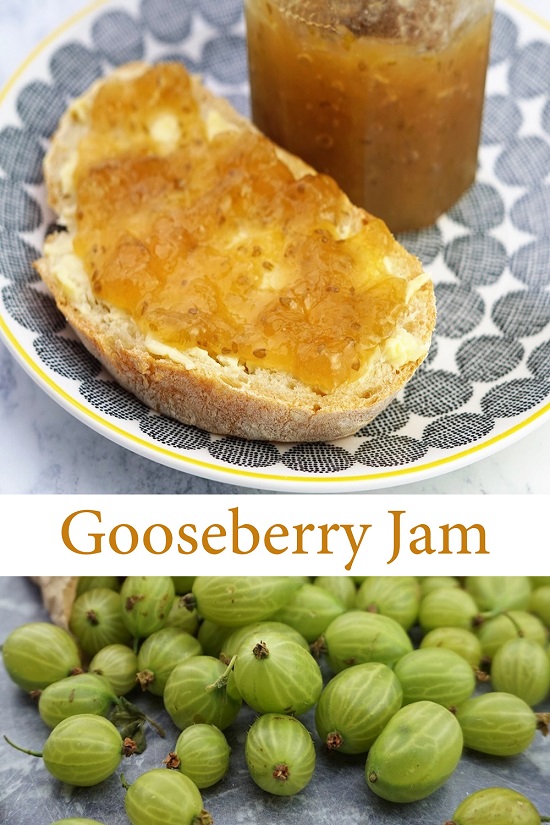
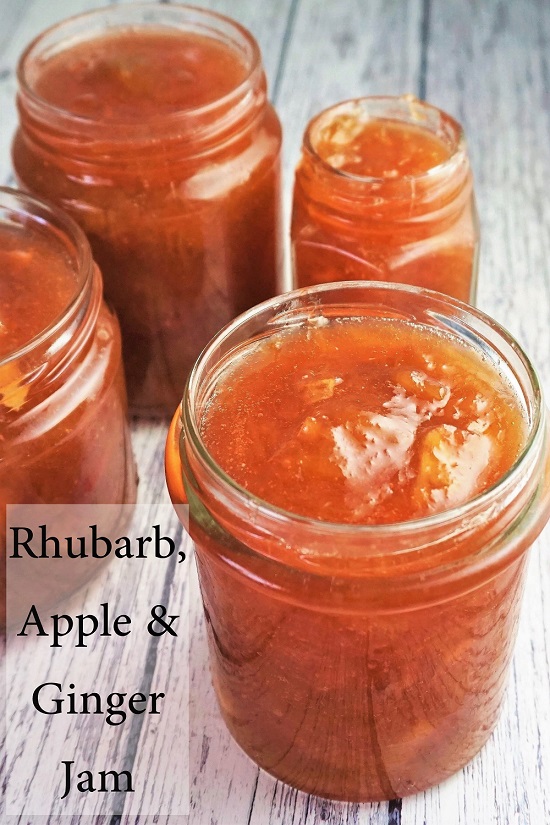
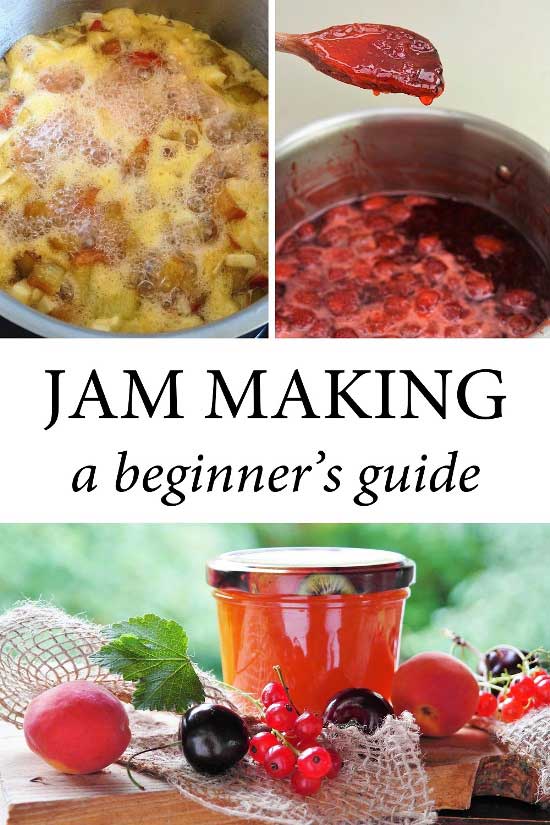
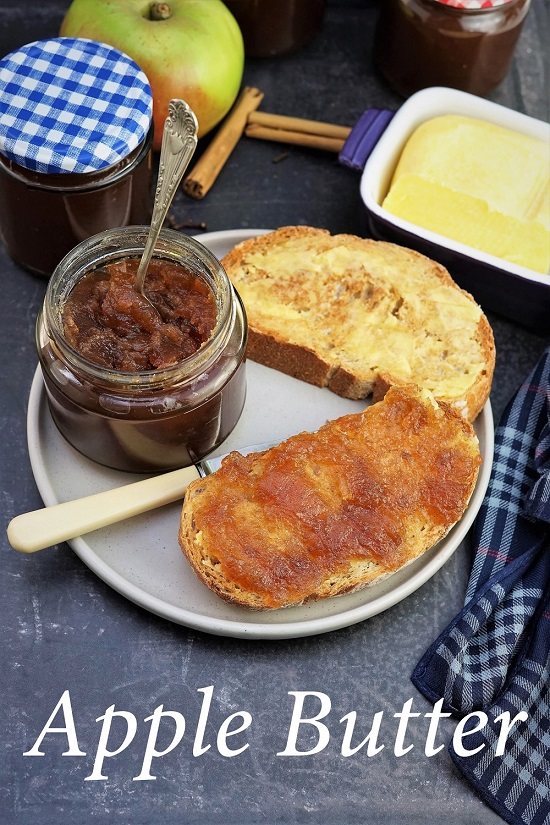

Hi, this sounds easy as I have a heap of grapefruit in my garden 🪴 I LOVE making bread too and find I usually make the same sourdough recipe using rye with sunflower seeds. It turns out well but would love to vary it a bit. Could you give me your crunchy seeded bread recipe?
Happy cooking and thanks for sharing!
Izzy from WA🦘
Hi there! You’re in luck because since I wrote the Grapefruit Jam post I’ve also shared the bread recipe I refer to in there! https://moorlandseater.com/multigrain-seeded-bread-no-knead-overnight-recipe/
It uses instant yeast rather than a sourdough starter, but you can easily adapt it using the same flours and seeds.
Hope you enjoy both recipes!